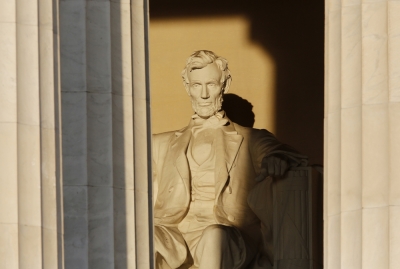What the episode at the Lincoln Memorial teaches us about the media standards

Nick Sandmann and some of his Covington Catholic High School classmates suddenly find themselves in a world of death threats, media smears, and pure vitriolic hate—all over something that they didn’t even do. All because major media outlets saw a story that confirmed their worst suspicions about Trump supporters, Catholic-school students, and pro-life advocates—a story that was too good to fact-check and they just couldn’t help themselves.
The episode was supposed to teach us a lesson about bigotry on the right. Instead, it’s confirming our worst suspicions about the current media landscape.
The first video released of the confrontation at the Lincoln Memorial between the high school students, visiting DC for the March for Life, and Native American activist Nathan Phillips outraged people of all political stripes—it wasn’t just liberals and progressives who were outraged at what seemed to be disrespectful behavior. Even the mayor of Covington condemned the students.
But when subsequent videos contradicted the media narrative, outlets with any semblance of integrity updated or recanted their first stories and reactions.
But many others doubled down on their attacks. Kathy Griffin supported revealing the students’ personal details and shared a tweet suggesting that the Covington school was full of Nazis. The facial expression of a teenager became a symbol of white privilege. As late last Tuesday night, Freshman Congresswoman Ilhan Omar supported the debunked theory that the kids were leading racist chants and shared an article decrying “whitewashing.” (She deleted the tweet on Wednesday.)
Much of the problem stems from what seems to be a dangerous belief among journalists that it’s better to be first than accurate. The initial story in the Washington Post quoted Phillips at length but did not include a comment from the students. In their rush to run a story that could hurt President Trump, they abandoned basic journalistic standards. On top of that, they portrayed Mr. Phillips, the Native American man who was playing the drum in the video, as a Vietnam Veteran. Philips was very careful with his words to mislead intentionally: despite having served in the Marine Corps he was never deployed to Vietnam. It was several days before they issued a correction.
If that was not enough, once it was clear that their initial story was rife with factual errors, the Post published an article with a headline making it clear who the real victims of the episode were: journalists! “A viral story spread,” ran the headline. “The mainstream media rushed to keep up. The Trump Internet pounced.”
And who are the real villains in all this? The sub-headline makes that clear, too: “The online supporters of the president were ready for a moment like the Covington Catholic controversy.”
It’s hard to imagine a better illustration of the Bizarro world in which the media live. They are the victims of their inaccurate stories and their failure to provide a reliable first draft of history. And the people who are interested enough in the truth to point out journalistic inaccuracies? Merely opportunistic partisans, plain and simple.
Let’s not forgot those who saw a connection between Nick Sandmann and Justice Brett Kavanaugh, two Catholic men who people on the left believe are threats to reproductive freedom and poster white boys of privilege. One writer for Buzzfeed—an outlet that was already having a bad week after a blockbuster story about President Trump crumbled beneath its feet—went as far as to say the two have “the look of white patriarchy.”
These tactics by the left and its media partners are part of their strategy to emphasize identity politics. Make no mistake: today, identity politics isn’t only about helping minorities—it’s about demonstrating bigotry and expressing hateful rhetoric against white people, and white conservative men in particular. Identity politics is a dangerous and gross mischaracterization of racial equality and leads only down paths of bigotry.
Let me also take a moment to give a personal reason for why I find the episode so troubling. Covington Catholic School is a short drive from Cincinnati, where I was once mayor. I don’t know these boys, but I know boys like them, and I know the people of Northern Kentucky and Southern Ohio well. What may only be flyover country to the people reporting this story is home to many good Americans—a vibrant, diverse community that all too many inside the Beltway and in the corridors of power are willing to dismiss as a nest of bigotry.
The Covington student’s lives have changed forever. Undoubtedly, many in the media and individuals online will continue trying to make life as hard as possible for them. Despite the exoneration, they’re still conservative and Christian, so the media will always be willing to interpret their behavior based on incomplete evidence and in the worst possible light.




















